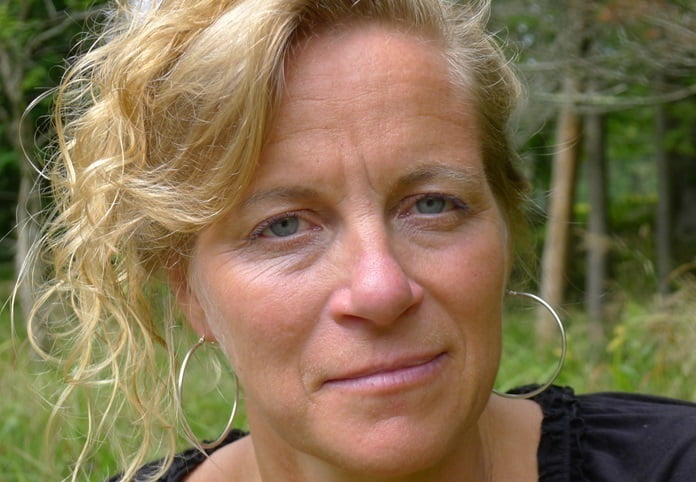At 59 years of age, the untimely death of Jane McAlevey from skin cancer came as a shock to the many unionists across the world intent on rebuilding rank-and-file power in their unions.
The youngest of nine children, McAlevey had a radical upbringing in the outer suburbs of New York. As a baby, her parents took her to civil rights and anti-Vietnam War marches in the city. After her mother’s death when Jane was five, her father began taking her to work with him.
As the local mayor, his campaigns against racist housing policies led to McAlevey’s harassment in school: “You’d go to school and get screamed at irrationally by the parents of other kids because ‘your father is going to bring black people to Rockland County’.”
In high school she began attending anti-nuclear protests on her own at age 13 and soon organised a successful student walkout, protesting against sexist female gym uniform requirements.
Attending State University New York, she helped lead a student occupation of the SUNY headquarters building to protest the university’s investments in South Africa. McAlevey was one of the “SUNY 6” organisers arrested for trespass; she and two others accepted 15-day sentences and went to prison rather than agree to refrain from protesting during a probationary period.
Four days after their release, and in the best tradition of mass movement politics, McAlevey and the other student activists steadfastly announced further protests. The resolve of the SUNY Board collapsed—voting to divest the university system from entities doing business in South Africa. It was the largest act of divestiture by anyone in the USA at that time.
Worker organising
Leaving university before completing her undergraduate degree, McAlevey initially worked for environmental NGOs before being recruited to run the Stamford Organizing Project, her first foray into union organising. She developed a model for rank-and-file worker-based social movement unionism that McAlevey called the “whole worker organizing approach”.
McAlevey was appointed national Deputy Director for Strategic Campaigns of the Health Care Division of the Service Employees International Union (SEIU) and then hired by SEIU Nevada as their Executive Director and Chief Negotiator in 2004. In the past 10 years she published four highly influential books on union organising.
In 2009, McAlevey was diagnosed with melanoma and forced to take a break from her work to undergo treatment. While bedridden, she began writing a memoir of her years in labour organising, which eventually became her first book, Raising Expectations and Raising Hell. After a year of treatment, she returned to university to pursue a PhD. Her doctoral dissertation became her second book, No Shortcuts.
Her studies completed, McAlevey returned to labour organising and continued to write, producing two more books, A Collective Bargain and Rules to Win By with Abby Lawlor.
Intensive course
McAlevey reached global audiences when, starting in 2019, she led an intensive six-week online course, “Organizing for Power,” at the Berlin-based Rosa Luxemburg Foundation, a democratic socialist policy nonprofit. Over four years, tens of thousands of unionists in 130 countries logged onto the workshops.
McAlevey’s arguments and advice about the need for all-out strikes democratically driven by rank-and-file involvement have struck a major chord among newly active memberships in Australian unions. McAlevey gives great heart and guidance to many unionists when she says things like “the cause of the union [is] class struggle” and “workers are the primary source of leverage against employers”.
It’s no wonder her writings are being taken seriously. She outlines a detailed, momentum-building, organising plan: research into who holds power in an industry; mapping workplace union density and social relationships; worker-leader identification; and tapping into workers’ community connections; which, when all done, provides the basis for an escalating series of “structure tests” to gauge member willingness to take bigger and riskier workplace actions building towards an all-out “supermajority” strike.
At first glance, McAlevey’s approach to rebuilding the union movement appears to articulate an alternative to the dominant top-down approach to organising that prevails in our unions. Yet despite her many useful insights, tips and advice there are three reasons why unionists seeking to build rank-and-file power should treat McAlevey’s guide for action with caution.
Two sides or three?
McAlevey mistakenly argues that in the best and most effective unions there are not three sides (union officials, workers and bosses) but only two: workers and employers.
Why does this matter? Rank-and-file activists will have their campaigning derailed if they think McAlevey is right. Even the best unions are never simply conduits championing worker demands.
Full-time union officials face a series of pressures due to their role as brokers between employers and employees that push them in a conservative direction. Unions operate within the legal and administrative framework set by the state, so deals negotiated by the officials are struck within the industrial relations rules imposed on them.
Officials on the left can sometimes be more open to action than those on the right, but all officials are extremely reluctant to risk “their” organisation (or their careers that depend on it) to challenge the legal rules strangling the capacity for union members to strike (outside the small enterprise agreement window they’ve been allotted once every few years).
Union officials do not share the same conditions as the workers they represent. They are at one remove from the experience of workplace self-organisation that makes workers so potentially powerful.
There are contradictory pressures on union officials. On the one hand, their position depends on maintaining the union as an institution and the officials must keep the institution they are managing ticking over. The actual union offices (and sometimes buildings), the cars, the phones, the bank balance, their relationship with other officials, are all needed for the official to function.
On the other hand, the officials need the rank-and-file. They need a membership that pays union fees and they need members to elect them to maintain their position.
To maintain their role as brokers, and be taken even a bit seriously by employers, officials do need to respond to the membership and represent the workers at some level.
It is this basic material and political tension between trade unions as a “movement” of rank-and-file members and as an “institution” that throws up the burning need for rank-and-file activism, organisation and leadership.
Part of the art of building strong rank-and-file activism is to be able to simultaneously work with and push union leaders to build the union’s strength and capacity to take action, while also organising independently of them when they are not willing to act for their members or are even hostile.
Gaza atrocities
The emergence this year of Teachers and School Staff for Palestine groups in NSW and Victoria shows how this two-sided approach to rank-and-file organising works. Angered by their education departments’ gagging staff and students from even discussing the atrocities in Gaza, hundreds of education workers are joining TSS4P.
They will not accept being directed to ignore the genocide’s devastating impact is having on their school communities. They are demanding that students with families who are being killed be recognised and supported and that they engage with the broader layers in their schools shocked by the hypocrisy of the Australian government mouthing vague calls for a ceasefire while providing intelligence and arms for Israel’s genocide.
In Victoria, TSS4P initially needed to act independently from the Australian Education Union officials to defend workers wearing keffiyehs and watermelon badges at school. They initiated a “weapons out of classrooms” campaign against the teaching material funded by military companies.
They mounted protests outside schools where teachers were being victimised. They rallied against Ben Carroll, the Minister of Education and key facilitator of Israeli war companies setting up factories in the state, when he attended schools.
The interconnected aim of TSS4P was to build rank-and-file support in each school and pressure the AEU officials to take a pro-Palestine stance and back their actions. With more than 30 TSS4P-aligned delegates attending the annual AEU state conference in late July, this dual strategy was spectacularly successful. For the first time, AEU officials moved a pro-Palestine motion and unanimously supported the stronger TSS4P motion as well.
This example of rank-and-file campaigning shows that McAlevey’s organising model that only sees two sides—workers and employers—does not deal with the reality that for the rank and file to organise effectively, they must deal with the contradictory role of the unions officials to successfully fight the bosses.
Digging further, Kim Moody, the veteran labour activist, argues that McAlevey’s planned, step-by-step approach is a “static strategy”—far too prescriptive and apolitical to be used as a guide for activists seeking to build member power. McAlevey’s approach unfortunately reveals her promised model for activists falls into the hands of organisers—not theirs.
McAlevey has attracted a lot of attention because in a world where corporate power grows and grows, and unions are on the back foot, she talked about capitalism, class, inequality and most of all she talked about union power, organising, striking and winning. Her ideas have inspired tens of thousands to look at the rank and file to see the real source of union power.
But her misunderstandings of the nature of the union bureaucracy, placing the activities of paid organisers at the centre of her strategy and de-linking organising from mobilising all fatally weaken her model.
We need to go beyond McAlevey for a rank-and-file strategy that can inform feisty rank-and-file networks such as TSS4P to build their campaigns and bottom-up industrial power.
By Marcus Banks





